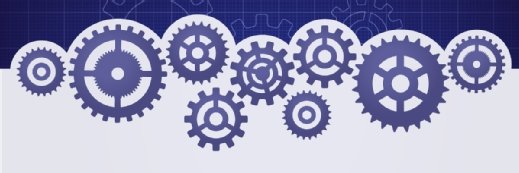
Getty Images/iStockphoto
10 key performance management software features, traits
When HR leaders purchase performance management software, they should confirm it includes features like customization options and 360-degree review. Learn more.
Performance management software is an important part of the employee management process, so HR leaders must work with others at the company to understand their organization's needs and make sure the company's performance management software includes some key features.
Performance management software should include customization options and mobile support, among other important features. The software vendor, which may be the same vendor an organization uses for its human resource information system (HRIS), should also offer responsive customer service.
Here are the most important performance management software features and traits to look for.
1. Simple navigation
Performance management software should be intuitive for all employees. Easy-to-navigate software can potentially help with adoption and reduce the amount of needed training. If the software is complex, users may avoid using the system.
The performance management software's user interface should be appealing and match the company logo and colors, and its wording should be easy for users to understand.
The goal-setting portion of the software should be straightforward, with simple navigation that doesn't require several clicks for users to get where they need to go. Employees and managers should be able to easily save their work and pick up where they left off later if they're unable to complete a review in one sitting. In addition, the goal-setting portion should be easy to understand, avoiding the use of complex HR terminology.
2. Ongoing employee performance tracking
The performance management software should provide leaders and employees with ways to track ongoing performance, including the ability to capture data from regular check-ins and formal performance discussions. The data can then become part of the employee's goals, or a manager can use it when giving general feedback to an employee. Employees may also find it helpful to be able to record their thoughts about their performance as well as potential growth opportunities.
In addition, any recognition that an employee receives from their peers or leadership should be easily accessible within the software for use in a performance-related discussion.
Once users enter feedback and ratings into the software, the data should be available to leaders at any time so leaders can use it for potential salary increases, promotions or other personnel decisions.
3. 360-degree feedback review option
The performance management software should offer a 360-degree feedback option for employees and leaders. That may include ad hoc requests from one leader to another or any employee's request for feedback from their peers. Users should also be able to select who will receive 360-degree feedback in case situations arise in which leaders only want to use this functionality with a subset of employees.
The 360-degree feedback option is important for companies because it can offer a more complete view of an employee's performance. For example, an employee may excel at meeting their manager's needs but struggle when working with peers.
4. Responsive customer service
HR and other company leaders may experience difficulty evaluating a vendor's customer service prior to purchasing performance management software. However, if the performance management software is a module of an existing HRIS, leaders can evaluate the HRIS's customer service and determine if it's acceptable.
Leaders can consider the following questions when evaluating a new vendor's customer service:
- Does the vendor offer 24/7 support, and if not, do their hours of operation align with company hours?
- Does the vendor offer support in the company's required languages?
- Will the vendor match the company with a dedicated support representative who will meet with employees on a regular basis and who will help escalate support tickets when required?
- Does the vendor offer self-service tools like FAQs, training or a customer community?
- Does the vendor offer the company's preferred method of customer service? For example, is customer service available through a portal, a toll-free number, an online chat service or another option?
Typically, a vendor's implementation team helps with the implementation, but a company is responsible for managing the software after that. HR and other leaders should confirm support will be available when needed.
5. Real-time data reporting and analysis
The software should include real-time reports and dashboards so the system administrator and other power users can easily access updated information.
For example, during a formal performance review process, a user should be able to quickly see the amount of complete reviews and who has completed them so HR staff or others can follow up with employees who have not completed their review.
HR leaders should also consider the best reporting options for managers and employees. For example, managers may want to be able to export data so they can work offline, and employees may want to view their records without logging into the system.
6. Mobile support
Performance management software should include mobile support so managers and employees can access the software while they're away from their laptop or computer. The vendor may offer an app or a responsive web design that adjusts the performance management software's layout based on the device.
HR leaders and others should keep in mind that a vendor app may offer more functionality than a website.
Offering mobile support is almost a necessity today. Many employees use their device more than a laptop. In addition, employees who are usually on the move, like warehouse or factory employees, may be able to use the performance management system more often if it's offered via a phone or other device.
7. System updates frequency
Knowing the frequency, or lack thereof, of the vendor's minor and major performance management software upgrades will help in many ways. While vendors rarely commit to fixing issues before their release, knowing that small releases occur on a specific schedule may provide some reassurance.
In addition, major upgrades usually provide brand-new features in addition to resolving some old defects. If company leaders decide they need new performance management software functionality, the vendor's release schedule and roadmap may offer clues about a release date for that new functionality.
Additional testing of the software before and after the system update can help confirm that the upgrade did not negatively affect the current production system features. In order to carry out this testing, the company must get a sandbox or test environment from the vendor and ask the vendor to apply the update to this environment ahead of the release. While vendors will test their updates extensively, they can't test everything, especially more complex or unique configurations.
8. Customization abilities
HR should work with other leaders to determine the amount of customization available for performance management software. The vendor will provide system administrators with the ability to customize or configure the system, and the amount of available customization depends on the vendor.
Some performance management software is very customizable, but this often increases the system management's complexity. Meanwhile, other systems offer very few customization options. Typically, performance management software falls somewhere in the middle and offers a range of customizations that will likely meet most companies' needs.
HR leaders working with others to choose performance management software should keep the organization's end users in mind when deciding on needed customization. A complex setup may complicate the performance review process for managers and employees and increase the risk of configuration issues.
9. Ability to move employees between managers
HR leaders should confirm that performance management software makes it easy to switch an employee from one manager to another.
Usually, the employee's current manager uses performance management software to rate the employee's performance, since they are likely the best person to provide feedback. However, an employee may need to switch managers weeks before the evaluations are due, or a manager may leave the company during a performance review cycle. In these cases, the employee's performance review may be stuck in limbo.
In these situations, a system admin often completes the employee's review with the help of the employee's new manager. However, this solution isn't ideal, and the performance management software should make it easy to move an employee to a new manager to avoid placing a significant burden on the system admin.
10. Integration with other software
The software should be able to integrate with other systems so managers can access data from them like completed courses and sales performance, which may affect an employee's performance review. This data should be available in real time when possible.
Including performance-related data in other systems and confirming that the performance management software allows for integrations from itself to other systems is also an option. Having these abilities can be useful for compensation planning, among other uses.






